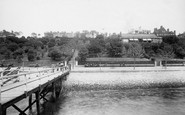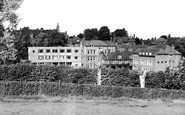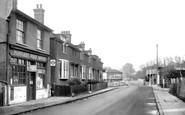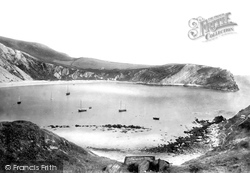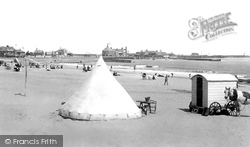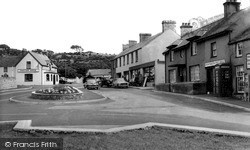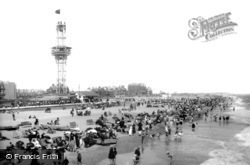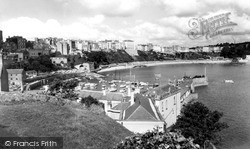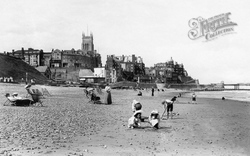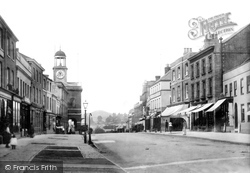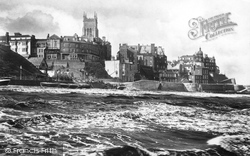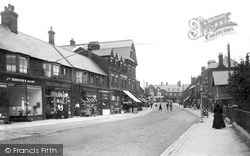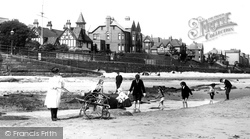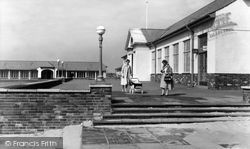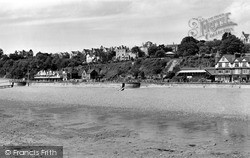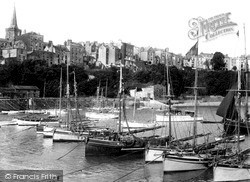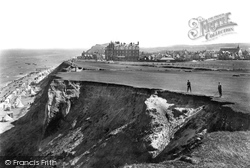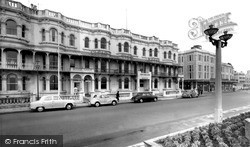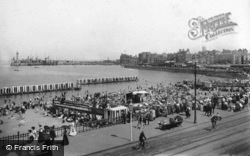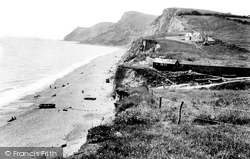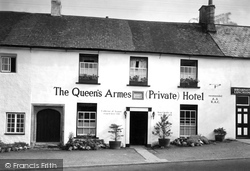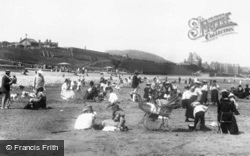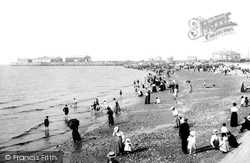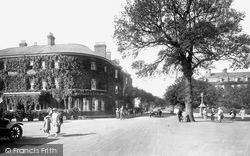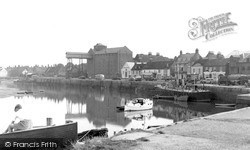Places
1 places found.
Those places high-lighted have photos. All locations may have maps, books and memories.
Photos
11 photos found. Showing results 901 to 11.
Maps
4 maps found.
Books
1 books found. Showing results 1,081 to 1.
Memories
1,362 memories found. Showing results 451 to 460.
Railway Camping Coachs
I would ha e been about eight years old when we came to Fairbourne in about1955 there was my mum and dad my three sisters and four brothers we stayed in this lovely Railway camping coach i remember my eldest sister taking me ...Read more
A memory of Fairbourne by
Railway
I worked at the railway station at Hiwaun, for a few years before moving to work at Shrub Hill Station, Worcester. I think that the Station Master was a Mr.Boult/Boulton. It is a pity that the trains do not run any more on that line. In ...Read more
A memory of Hirwaun in 1958 by
Raf Tern Hill And St Josephs College
From 1946 till 1951 we lived at RAF Tern Hill and every day my brother and I travelled by bus (Butters Bus Company as I remember!). We were dropped off near the lovely ivy-covered hotel in the square, and ...Read more
A memory of Market Drayton by
Radio 1's Tony Blackburn Comes To Polzeath
I have great memories of staying with my Aunt in Polzeath in the mid 1970's. Her house was high up and we used to walk down to the town and to the beach every day. One night in 1977 (late August) the Tony ...Read more
A memory of Polzeath by
Queen's Rd..
Hi, I was born in 1953 in Beech Mount Hosptal. I had two sisters, Carolyn and Deborah and three brothers, Billy, Gary and Wayne. We lived on Queen's Rd and went to St Malachy's. I had my last year at St Edmund's, then onto Blessed ...Read more
A memory of Collyhurst in 1953 by
Queen Victoria
My memory goes back to 1966, it was to be the last time I took my children to Southend for the day, because we migrated to Australia in 1967 (45 years ago). Then this year we went back for a holiday with my daughter and two ...Read more
A memory of Southend-on-Sea in 1966 by
Queen Mum Opens New Dining Wing
I remember being in the Beeches Prep School at the time. Anybody else remember the staff I wonder? Miss Lambert in Kindergarten and Transition, Miss Cutler - Form 1, Miss Reid - Lower 2 and Mrs Cotton in Middle ...Read more
A memory of Berkhamsted in 1960 by
Quay Cottage In Port Quin
After staying in Quay Cottage several times and loving every one of them I still miss going back. On one visit I asked some local friends round for a BBQ , after a quick look around this original house I showed them ...Read more
A memory of Port Isaac in 1995
Purfleet A Very Nice Community
We moved from the garrison to the village just after the floods, I was 12. We moved into Malakwa, next door to the post office run by Mr and Mrs Smith and their daughter Silvia (I had a crush on her but that is ...Read more
A memory of Purfleet in 1951
Pure Nostalgia
From 1948 until about 1960 the docks were my playground. My father was a member of the EXE Sailing Club (as was I, in my teens), and my grandmother lived in Mamhead View. I often stayed with my grandmother for extended periods. I ...Read more
A memory of Exmouth in 1955 by
Captions
1,130 captions found. Showing results 1,081 to 1,104.
The entrance to this circular natural basin is barely discernible from the sea, guarded as it is by two projecting spurs of resistant Portland and Purbeck strata.
A lone tent sits on the empty sands.
This scene is virtually indistinguishable today: even the tear-shaped flower bed has survived decades of traffic management. The Panton Arms (left) is named after a local antiquarian, Paul Panton.
Always Norfolk's biggest and most popular holiday resort, Great Yarmouth always tried to find the latest attraction.
CASTLE HILL has a commanding view of both the landward and the seaward approaches, and it was almost certainly the location of an Iron Age Celtic promontory fort.
Boasting several large hotels, especially the Hotel de Paris which is right opposite the pier entrance, Cromer had become a very select place to visit.
This view shows the western end of East Street, with a closer look at the Town Hall clock-tower and cupola, and Colmer`s Hill forming the conical eminence in the distance (centre).
With its imposing 160ft-high tower, Cromer church was erected in the reign of Henry IV and dedicated to St Peter and St Paul.
Hunstanton is unique for north Norfolk resort towns in that it looks west across the sea and not east. It was a quiet village of simple fishermen's cottages until the coming of the railway in 1862.
Playing on the sands seems to be an enjoyment forgotten today, but here these youngsters certainly seem to be enjoying themselves on Egremont beach.
Despite a number of attempts at regeneration, the Lido at Ainsdale was an early casualty of the national move to overseas holidays.
With the last significant addition to the Esplanade being the Italian Gardens of the 1920s, only the cars (far right) betray this photograph's modernity.
This view shows the western end of East Street, with a closer look at the Town Hall clock-tower and cupola, and Colmer`s Hill forming the conical eminence in the distance (centre).
Tenby is probably the most recognisable seaside town in Wales.
Difficult though golf is, the natural hazard of crumbling cliffs on the edge of Sheringham Golf Links normally ensures that golfers practice their accuracy. Here we have two who have not!
Unlike the Stanhoe Hotel, the Clear View was typical of the small to medium-sized hotels that had been built on the former open spaces and lawns of the Georgian resort.
Benjamin Beale, a local glovemaker and a Quaker, invented the bathing machine in 1751 to conserve ladies' modesty while they took a dip in the briny.
This view shows Eype Mouth, looking westwards to what is now a National Trust skyline, with Ridge Cliff and Doghouse Hill rising into the 508-feet summit of Thorncombe Beacon (centre).
Note the inscriptions on either side of the door and the plaque above it.
This popular seaside resort sits in a wide sweep of bay on the north coast, with wooded hills behind the promenade, which fronts miles of safe sandy beach.
Our late Victorian visitors were presented with a pebbly beach. We can see the stone jetty in the distance: it was still the main anchorage for ships when our photograph was taken.
Along with the building to the left, it is now part of an amusement arcade, yet much of the original façade remains intact.
Benjamin Beale, a local glovemaker and a Quaker, invented the bathing machine in 1751 to conserve ladies' modesty while they took a dip in the briny.
The Great Eastern Railway Company developed the quayside, and freight trains rolled under the high platform of the tall granary warehouse to receive produce.
Places (1)
Photos (11)
Memories (1362)
Books (1)
Maps (4)

